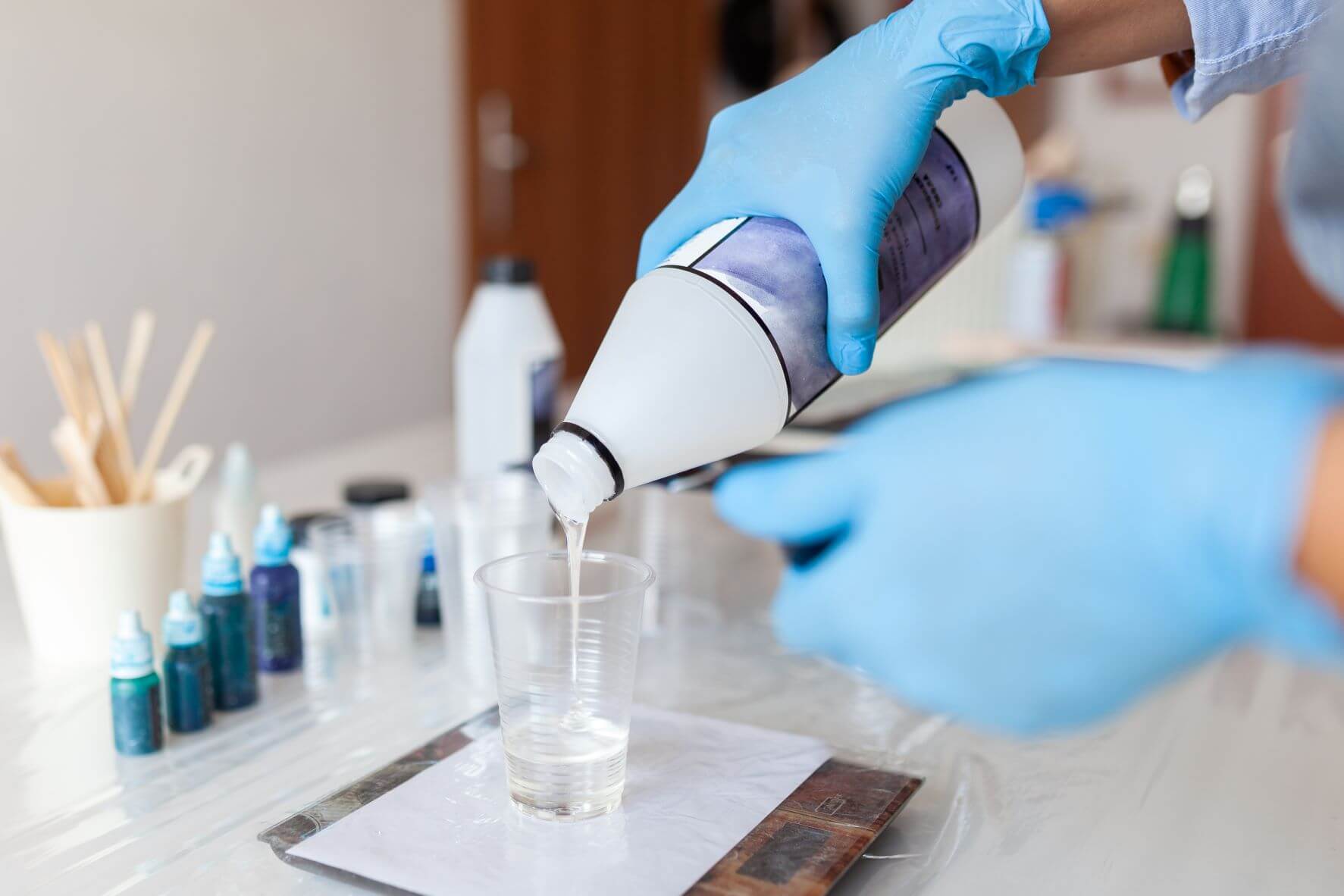Resin is a chemical compound often needed to coat or reinforce surfaces and materials. Epoxy resin is one of the most popular kinds of resin. It is used in a wide number of applications for crafting and manufacturing. It is also often used to coat surfboards, guitars, dioramas, furniture, and other woodworking items.
If you’re searching for the best digital scale that you can use to measure resin, you might want to read on. This article offers some suggestions on what to watch for in finding a digital scale for resin. And it also talks about the various applications of resin and their weighing requirements.
Here’s a discussion on how to choose the best resin digital scale, which might prove helpful for your pipelining projects:
- Why Digital Scale Is Needed To Measure Resin
Using a digital scale to measure resin is highly important because of the need to use precise ratios in mixing the components of resin. Epoxy resin isn’t a standalone chemical material cast or poured without using other materials or components. You would usually have to mix epoxy resin with a hardener and a dye to your desired resin material for casting. Epoxy resins are used to coat the wood to protect it from termites.
Most of the sold epoxy resin made by industrial manufacturers requires using fillers or some other additives. These additives and fillers are supposed to help add or reinforce some of the resin’s properties. But most if not all of these materials and components have different levels of density. It makes it difficult to just rely on volume in mixing them.
- How To Choose A Digital Scale
There are very precise digital scales for measuring out resin, such as the Max US Scale and other similar scales in the market today. It is a highly accurate and portable digital scale. You can bring it wherever you have to go to do some measurements. It comes with a hard plastic carrying case. But its most important feature is that it is highly accurate. It is what’s important in resin scaling.
This portable scale can measure up to 1/100th of a unit. And other scales in existence can only measure up to 1/10th of a unit. This scale is also sensitive in that it can detect right away if you change the volume of the material placed on the scale. This feature does away with the lag times that usually happen when the volume of the material being measured out is changed. This scale can run on a battery, so you don’t have to worry about where to plug it. It also has a backlight which helps you see the display even when you’re in a dark or poorly lit place.
Here are some of the features you should look for in choosing the best resin digital scale for your pipelining project works:
- IP Rating – Ingress Protection (IP) ratings refer to the level of protection that the sealed electrical closures of an electrical device have against foreign elements, as well as moisture. The first digit in the IP rating indicates protection against intrusion. The second refers to protection against moisture.
- Accuracy – You can choose a digital scale that has a high level of accuracy. It’s the feature that is most important in weighing the ingredients of your resin mix.
- Compatibility With Indicators – You should choose a scale with digital indicators that can be read clearly, and accurately. The accuracy and precision of a scale are crucial to getting the exact weights, ratios, and proportions for your resin mix.
- Accumulation – Another feature that would be very helpful is if your scale can identify the accumulation of weights. The accumulation feature lets you monitor the running total of items that were weighed. It makes it possible for the ingredients of the mixture to have the same combined weight.
- High-Capacity Scales – You should next consider the capacity of a digital scale to weigh considerable amounts or quantities. It isn’t needed if you only need the scale to figure out the proper ratios. But if you also intend to do your batching on the scale, it would be nice to have some capacity.
- Clean Up Mechanism – When you’re looking for your best digital scale, you should also take into account that some resin and other solutions will spill onto the scale from time to time. So, you should pick a digital scale that is relatively easy to clean up. Removable pans and removable platforms are great for cleaning. There should be a way to clean both flat surfaces and the nooks and corners of the digital scale.
- Price – Of course, you also have to take into account the price of the digital scale model that you’re eyeing to purchase.
- Enhanced Features – A digital scale can have other features which other models don’t have. Some common enhanced or additional features are overload protection, portability, and element protection.
- Impact Of Imprecise Scales
One of the problems that can result from mixing resin using incorrect or imprecise ratios is that the outcome of your solution could be a tacky resin. It’s a solution that isn’t able to reach its full strength. Using imprecise ratios can also affect the time for your resin to cure. Your curing time could become a lengthy and even messy process on its own, instead of just being a short part of the entire resin mixing process. It is necessary because the resin is meant to protect the material that it’s supposed to line or cover.
Take surfboards, for example. Some surfers who are very particular with their equipment coat their surfboards with epoxy. The epoxy coating is supposed to cover the soft light material underneath the epoxy from being damaged by the salinity of seawater. If your epoxy resin mix resulted in a tacky solution or mixture, your epoxy coating material might not achieve the protective insulation that it’s supposed to do for your surfboard.
In pipelining, although your pipes won’t be exposed to as much seawater as a surfboard, they can be exposed to other corrosive liquids and materials, such as hot cooking oil, dishwashing liquid, acidic solutions, and even liquid solutions to unclog sinks.
Consequently, you should always check the ratio recommended by the manufacturer in the label before you go ahead and mix the resin components. If you’re going to work on a large project which would require huge batches of resin, you might want to consider making a smaller batch first. It could help you test and measure your ratios to make sure you’re doing the mixtures the right way with the precise ratio measurements. It is the only way to ensure that the resin you have will cure according to the manufacturer’s specifications.
- What Kind Of Scale To Measure Resin
When you’re thinking of choosing the best resin digital scale for your pipelining project, one of the factors you should consider is the quantity you need to pour. You should select the kind of resin digital scale that would fit your project requirements. Choose one that would help you do what is needed for your resin mixing project.
You should try as much as possible to follow the ratios specified by the manufacturer in the packaging boxes or labels. Sometimes, the ratios prescribed in the manufacturer’s instructions are highly specific, and you have to follow them to the last digit. In the case of dyes, try not to disregard the recommended ratios because they’re very concentrated materials.
In choosing a digital scale for small batches, you should select a model that can display up to ‘XX.Xg.’ You should get a digital scale that can display up to ‘XX.XXg’ for testing materials, developing recipes, or making batches to use for research. Check the digital scale that you’re eyeing, and make sure it can do measurements in all units. There are cheap scales that can only display the second digit when they measure in ounces. But they won’t be able to do it when you use them to measure grams.
You should carefully measure out your components before you mix them. Sometimes you’ll have to do some trial and error to figure out the correct and precise ratios. Once you figure out the formulas and ratios that work well with your projects, you should write them down so you can remember them and won’t have to experiment again. Keep in mind that working with mixers and using pigments as additives can be a very delicate task that requires a high level of precision and accuracy.
- Choose What Suits Your Project Needs
Professionals who’ve done a lot of mixing and experimenting in the companies they work for usually recommend that you shouldn’t use anything more than 5% per weight of components. Go slowly but surely until you get the right mixture. You don’t have to mix large batches right away, anyway. It’s more important to figure out the precise and possibly exact ratio needed for what you have to do.
Some of the chemicals and pigments used in mixing resin are very expensive. You could end up wasting a lot of time and money if you get the wrong mix. It would just go to waste if you get the color wrong or the mixture you made doesn’t cure the way you need it to be. It is why it’s necessary to get the measurements right. And you can only achieve that if you have a precise digital scale.
For your pipelining project, if you come up with a poor or bad resin, the resin lining that you implement might not achieve the objectives of your project. For instance, the resin might not last as long as the designers or engineers had in mind when they included resin coating in the project’s scope of works.
For those who use resin to coat wood, pouring bad resin or using it to coat woodworking or furniture projects can put the whole thing to waste. They’d have to junk the whole item if the faulty resin they coated on the wooden object could no longer be removed.
- Specific Applications And Project Requirements
The typical weighing scales used in flooring applications and manufacturing plants are large weighing platforms for mixing resin. Some use floor scales instead. The disadvantage of using these large weighing platforms and floor scales is that you sacrifice accuracy because they’re not very precise. But they’re used in manufacturing and industrial applications because they allow the mixing of resin components in larger quantities in just a single batch.
To maintain the accuracy and precision of their measurements and ratios, what they do in manufacturing and industrial applications is that they measure out the ratios first in small quantities. It helps them figure out the appropriate recipe or formula that works for their purpose. Once they have this figured out, they use the ratios using a larger capacity scale such as a weighing platform or floor scale. They adjust the ratios of the mixture a bit as needed, to get the right mix.
This method is most appropriate in manufacturing and industrial applications since they usually need resin mixtures in huge quantities. It would be too inefficient for their operations if they mix the resin in small quantities to meet the requirement of using precise ratios. Another reason is that large quantities or batches of the resin mix would take more time to cure.
If you need to do huge quantities or large batches of your resin mix, you should consider choosing a scale that is sturdy enough to be able to bear the weight of your batch containers. It should also be resistant to the possible spills of resin components.
Sometimes you won’t be able to avoid spilling adhesives, epoxy, and dyes on the scale platform. Epoxy can be very hard to remove if they spill to your platform. When epoxy cures, it could result in hard epoxy smudges on your platform or scale. These seemingly small smudges can be enough to throw off the accuracy of your scale as you try to find the correct mixing proportions.
For these large batching requirements, there are large washdown scales that might be appropriate for their requirements. These washdown scales are rated IP67. They can withstand being washed with water jets and chemicals, so the epoxy smudged and hard deposits can be easily removed and cleaned. Other manufacturing plants opt for the stainless-steel pans that sometimes come with in-use covers. These pans with covers can prevent the resin batch from spilling onto the scale platform.
Conclusion
Accuracy and precision are crucial in the preparation of resin mix. The weights and ratios of the different ingredients combine in a certain way to come up with the desired result. It is why you have to know how to choose the best resin digital scale. When you choose a digital scale that has a high level of weight accuracy, this can significantly reduce the inaccuracies and imprecision.



